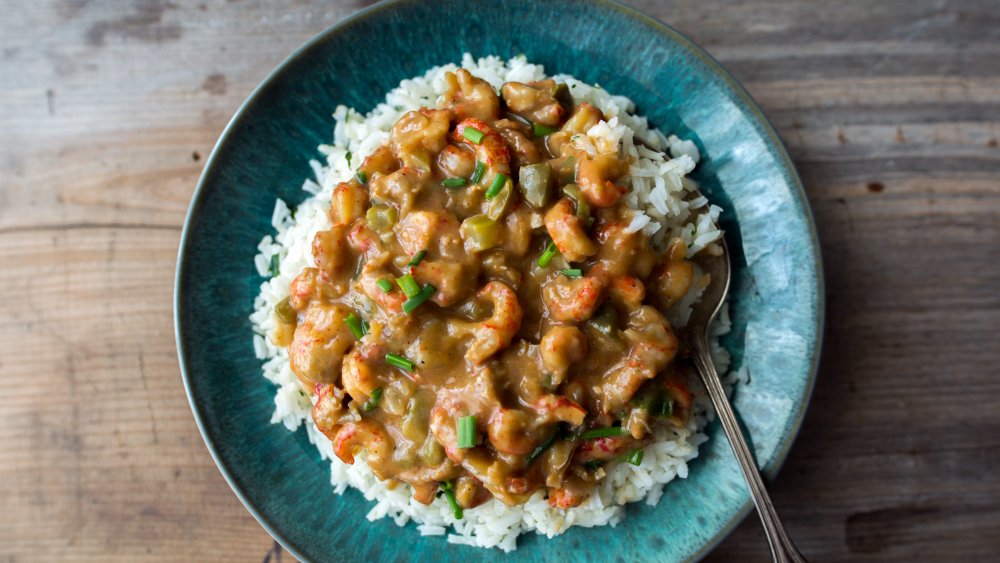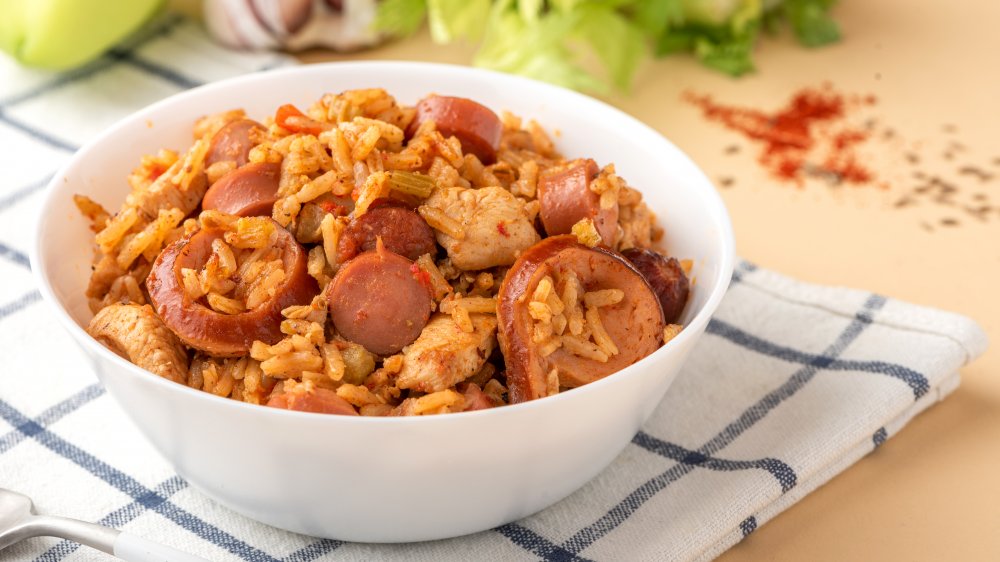The Real Difference Between Jambalaya And Etouffee
If you've ever been to Creole or Cajun country, then chances are you've seen jambalaya and etouffee listed on the menus of restaurants. Or perhaps you love the uniquely spicy foods that are associated with the low country and wanted to make your favorite dishes at home. Jambalaya and etouffee are both classic staples for both Cajun and Creole cuisines, and both dishes share several characteristics, so you might wonder what exactly the difference is.
One way to think of these dishes is how they're served, though. Both are main dishes, but jambalaya is made with rice already in the dish. Etouffee, on the other hand, is a main course of shellfish in a thick sauce that can be served over rice (via Popsugar).
A number of the distinguishing characteristics come down to several key ingredients within each dish. To really understand the difference between jambalaya and etouffee, you have to break down the dishes into their components or main ingredients. One dish must have a certain base that the rest of the dish is built on, while the other is a harmony of flavors defined by the combination of main ingredients (via Chow Hound).
Evaluate the main ingredients
To understand the difference between jambalaya and etouffee, start by taking a closer look at the main ingredients. Etouffee always begins with the Holy Trinity: onions, bell peppers, and celery, chopped and cooked as the base of the dish. It's also important to note that etouffee includes a roux to thicken the sauce, though jambalaya doesn't use one. Another key indicator of etouffee is that it is typically made with shellfish, like crawfish, shrimp, or crab, though it is sometimes made with meat. Whatever the star protein might be, etouffee only has one, maybe two at the most.
Jambalaya is all about the combination of proteins — namely, andouille sausage, chicken, smoked ham, and shrimp. It isn't uncommon to see at least three of these (if not all four) in a pot of jambalaya. The dish is also simmered with the rice in the pot already, too, which makes sense, because it is a distant relative to paella.
Now that you know the difference between etouffee (the thick, seafood gravy dish) and jambalaya (a simmered stew of meat, shellfish, and rice), you can easily make either example of Cajun and Creole cooking.

